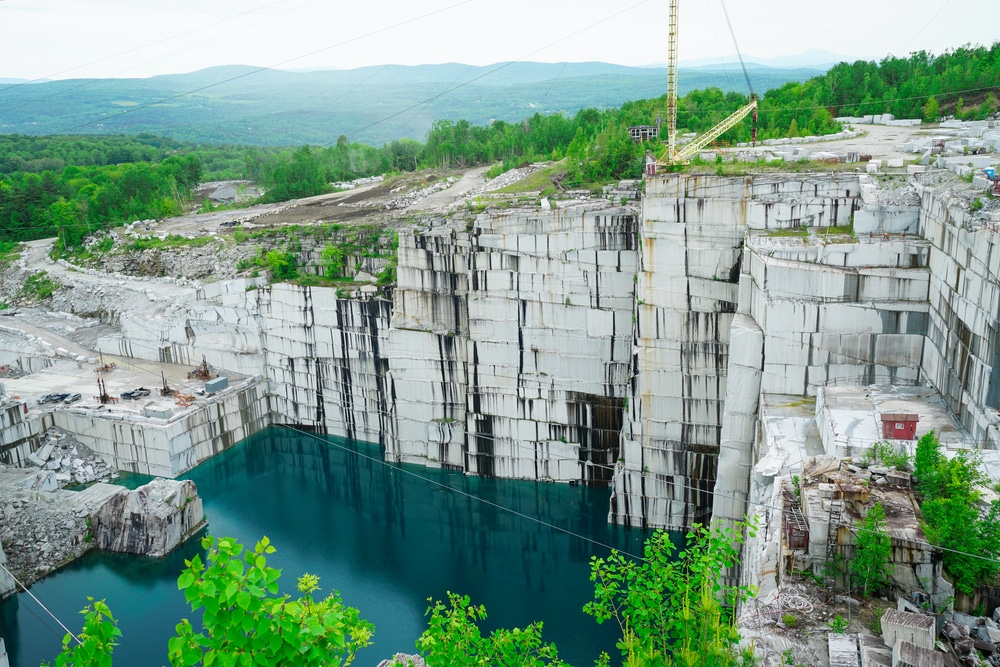Introducing the Mysteries of Granite Quarrying: Where Toughness and Sophistication Meet
The globe of granite quarrying is a world where the raw toughness of nature converges with human artistry to develop structures that stand the examination of time with an air of style. From the midsts of quarries to the precise polishing in workshops, the process of changing granite right into architectural marvels is an intricate dancing of custom and development. As we peer into the depths of this old craft, we start to discover the covert intricacies that form the extremely significance of our developed setting.
The Origins of Granite Quarrying
In the record of architectural history, the origins of granite quarrying are shrouded in a tapestry of ancient craftsmanship and geological wonders. Dating back to old Egypt and Mesopotamia, the removal of granite from quarries marked the beginning of a trip that would ultimately bring about the production of some of the world's most renowned frameworks.
Granite quarrying's origins can be traced to the proficient craftsmens that recognized the rock's resilience and visual allure. Via a combination of primitive devices and sheer determination, these very early quarry employees uncovered granite blocks that would certainly end up being the foundation of worlds.
As civilizations evolved, so did the strategies of quarrying granite. The Romans, renowned for their design expertise, established sophisticated approaches for drawing out granite to construct monoliths, temples, and roads that stood the test of time.
The legacy of these old quarrying methods continues to form modern architecture, with granite staying a sign of stamina and sophistication in construction tasks around the world. (granite quarries in south africa)
Devices of the Quarrying Profession
The advancement of granite quarrying techniques from ancient worlds to modern-day times highlights the vital duty played by the tools of the quarrying trade in forming the sector's techniques. In ancient times, quarrying tools were primary, often consisting of blades, hammers, and wedges made from products like bronze or iron. These tools called for significant manpower and time to essence granite obstructs from quarries.

Additionally, the intro of pneumatic devices and high-powered machinery has substantially reduced the physical labor needed in quarrying operations, enhancing worker security and efficiency. As the quarrying sector remains to introduce, the devices of the trade remain at blog the center of driving progression and shaping the future of granite extraction.
Extracting Blocks of Granite
Using accuracy machinery and advanced strategies, the removal of granite obstructs from quarries has come to be an innovative procedure in the modern quarrying sector. The initial action entails recognizing the location and dimension of the granite down payment to identify the most effective removal approach. When an ideal website is chosen, the removal procedure begins with the drilling of holes for the placement of dynamites. Controlled blowing up methods are then employed to disintegrate the granite into convenient sections.

Polishing and Ending Up Strategies
To attain a flawless surface on granite blocks, proficient artisans employ a collection of careful sprucing up and finishing methods. After the preliminary removal and shaping processes, the granite obstructs undertake a complete sprucing up phase to boost their all-natural beauty and sturdiness. One common technique used in brightening granite is ruby abrasion, where commercial diamonds are utilized to grind and polish the stone to a smooth coating. This process not just creates a lustrous surface area however likewise makes sure harmony in color and appearance throughout the granite block.
Along with polishing, ending up strategies are put on additional fine-tune the granite's look. These strategies might include flaming, refining, or brushing, each offering distinct structures and coatings to suit various aesthetic preferences. Flaming, for example, entails subjecting the granite surface area to heats to create a harsh, textured surface, suitable for outdoor applications where slip-resistance is crucial. Sharpening, on the various other hand, gives a matte coating that is smooth to the touch, perfect for indoor countertops and flooring. By carefully selecting and applying these polishing click this link and finishing techniques, craftsmens can change raw granite blocks right into exquisite pieces that showcase both stamina and beauty.

Ecological Effect and Sustainability
With the expanding emphasis on environmental awareness in the sector, granite quarrying methods are significantly scrutinized for their effect on natural sources and lasting sustainability. In addition, the transport of granite from quarries to processing facilities produces carbon discharges, even more adding to ecological degradation.
To minimize these impacts and ensure sustainability in granite quarrying, market stakeholders are taking on various steps. Applying advanced technologies to lower energy consumption and water use, find more info recovering quarried land for ecological remediation, and promoting accountable sourcing practices are some techniques being utilized. Furthermore, certifications such as the Woodland Stewardship Council (FSC) and the Management in Energy and Environmental Style (LEED) help customers determine eco-friendly granite products.
Conclusion
To conclude, granite quarrying is a process that calls for specialized tools and methods to remove blocks of granite and polish them to a high degree of coating. While the environmental influence of quarrying can be significant, initiatives are being made to improve sustainability practices in the market. Overall, granite quarrying is a fragile balance between harnessing the stamina and beauty of this natural stone while decreasing its influence on the atmosphere.